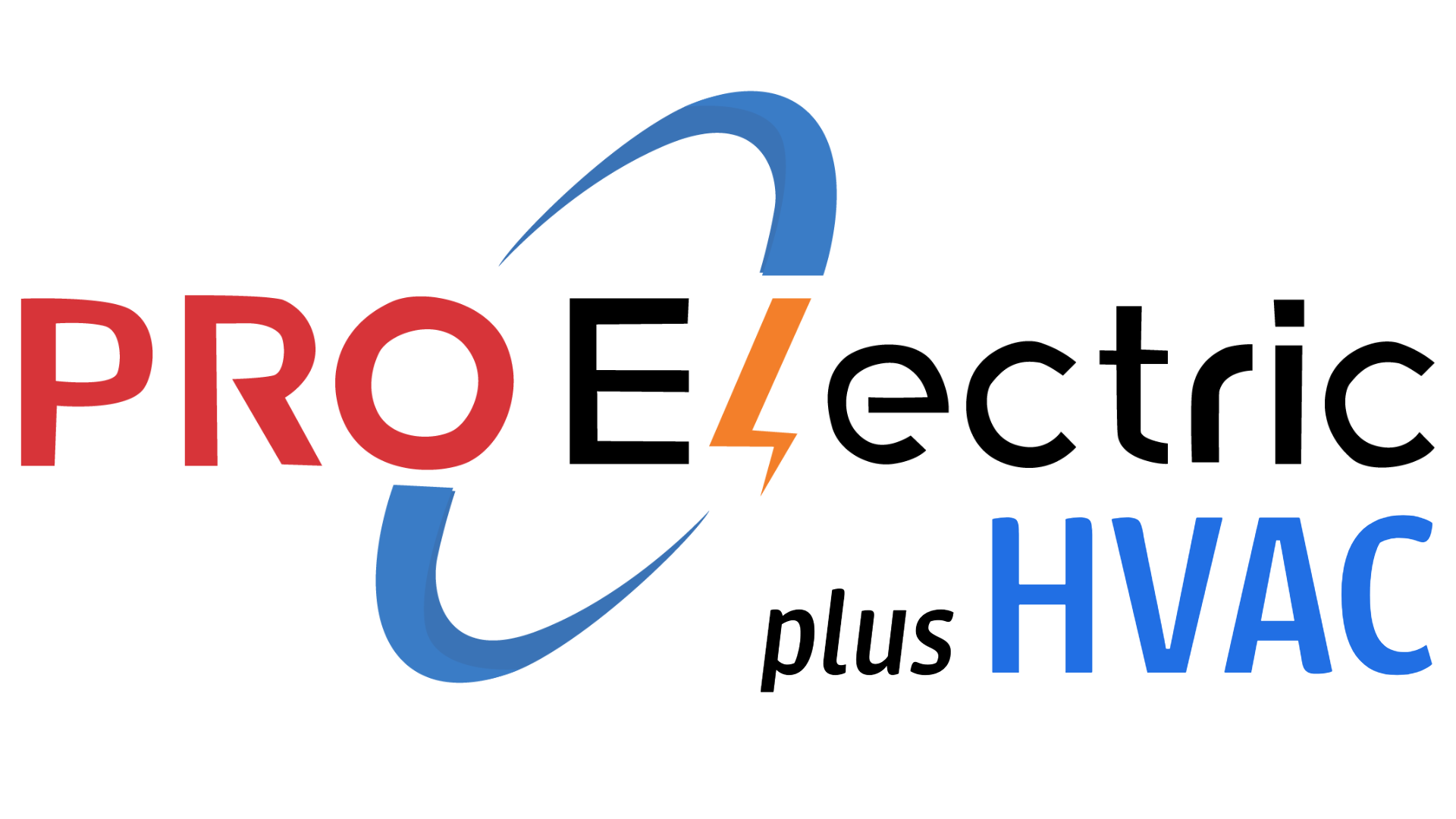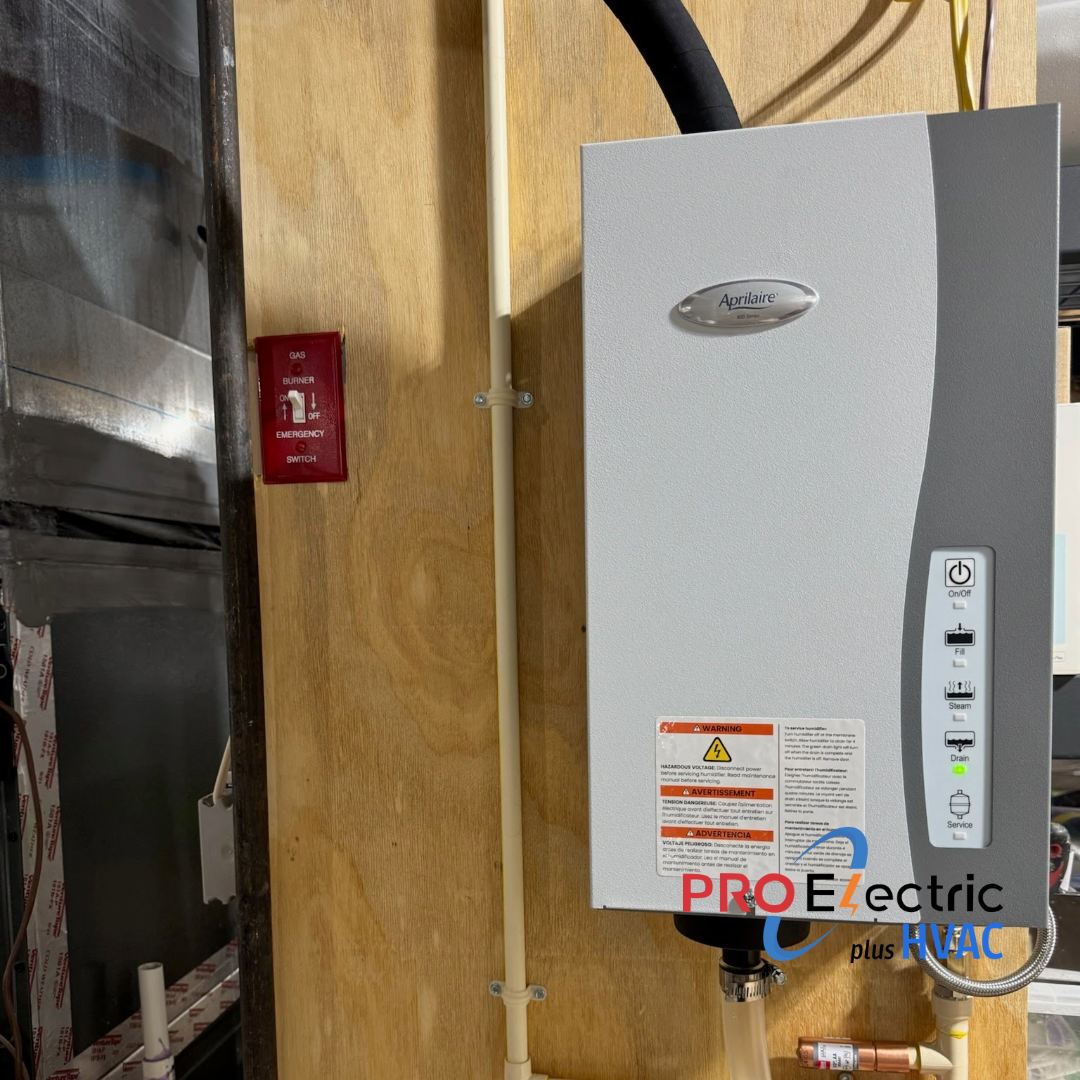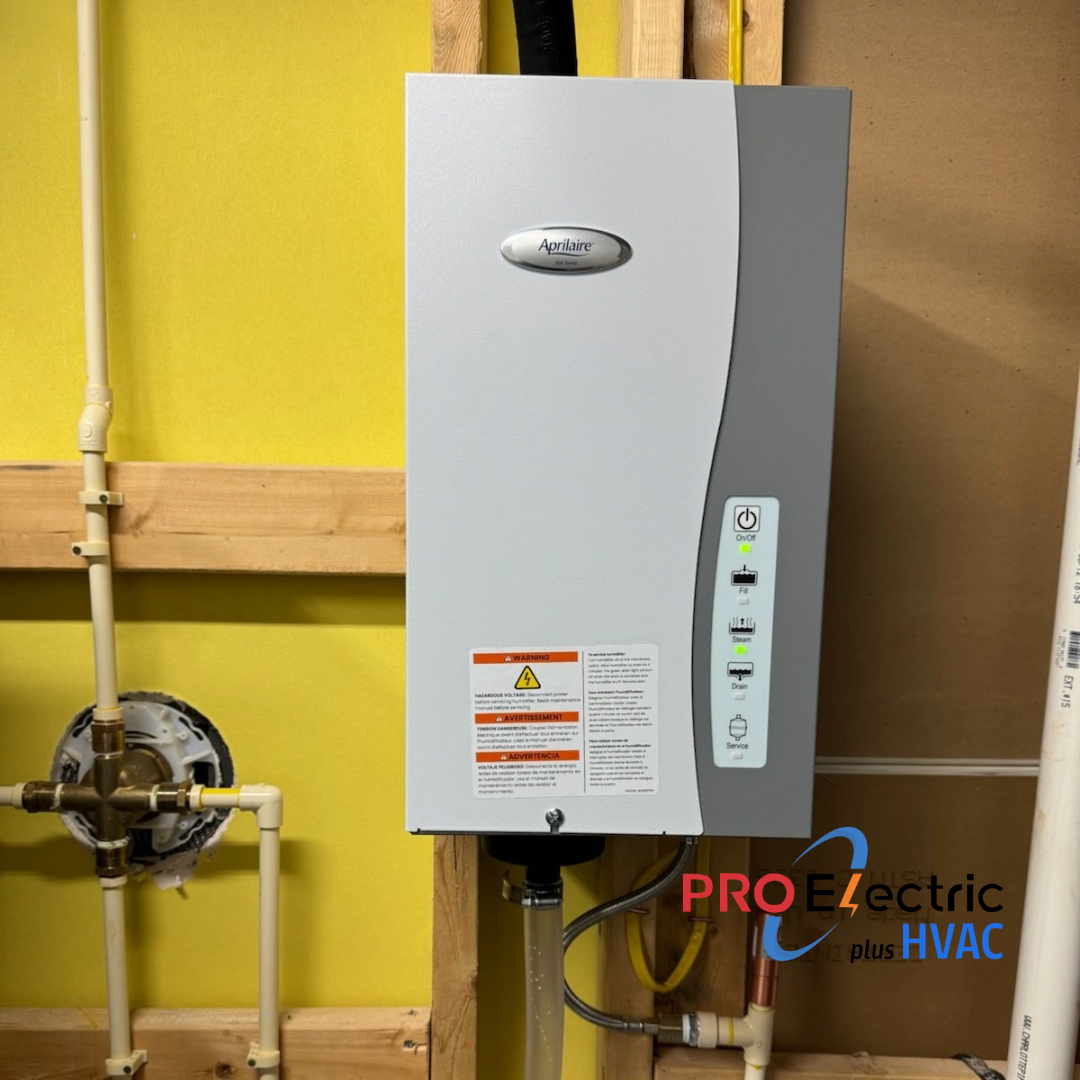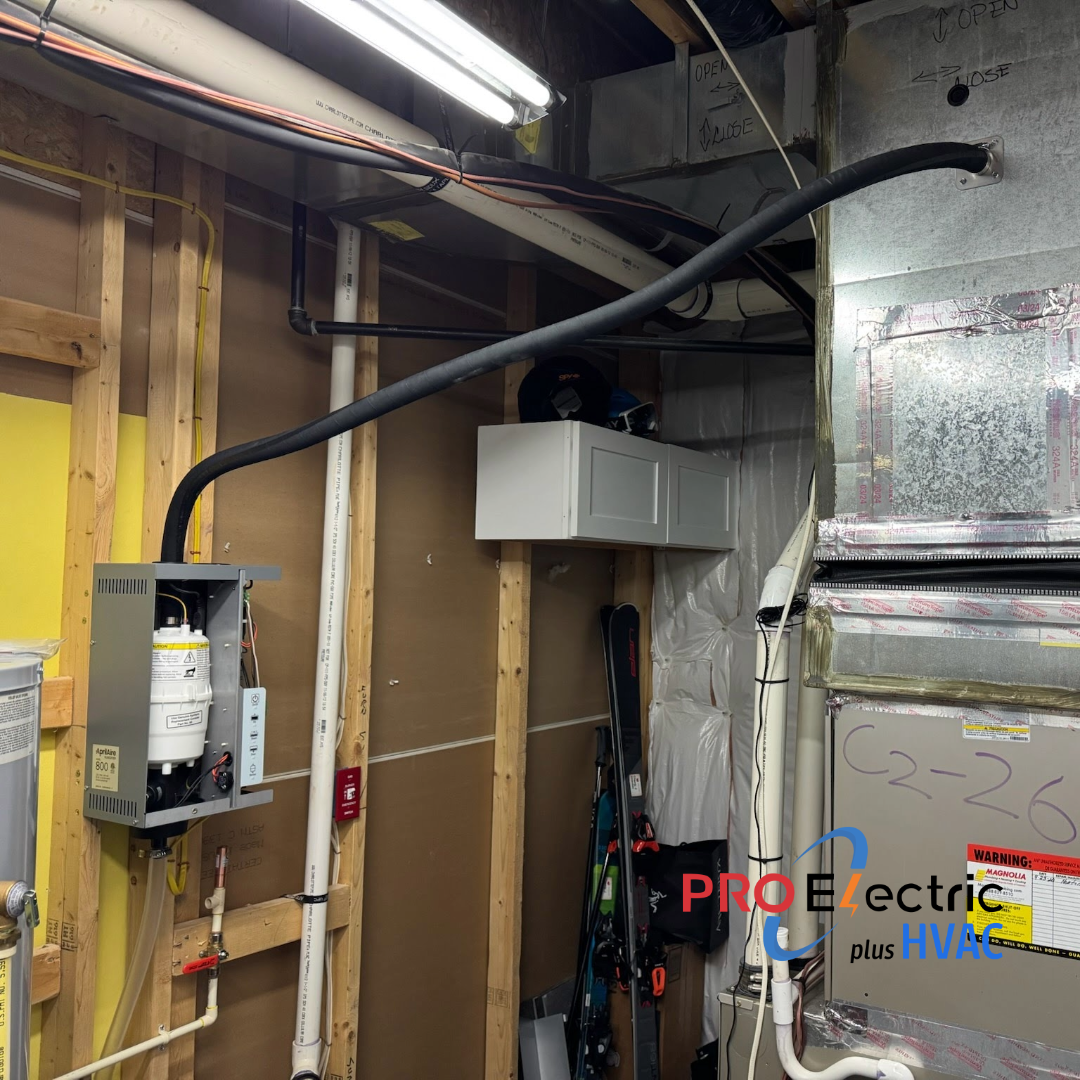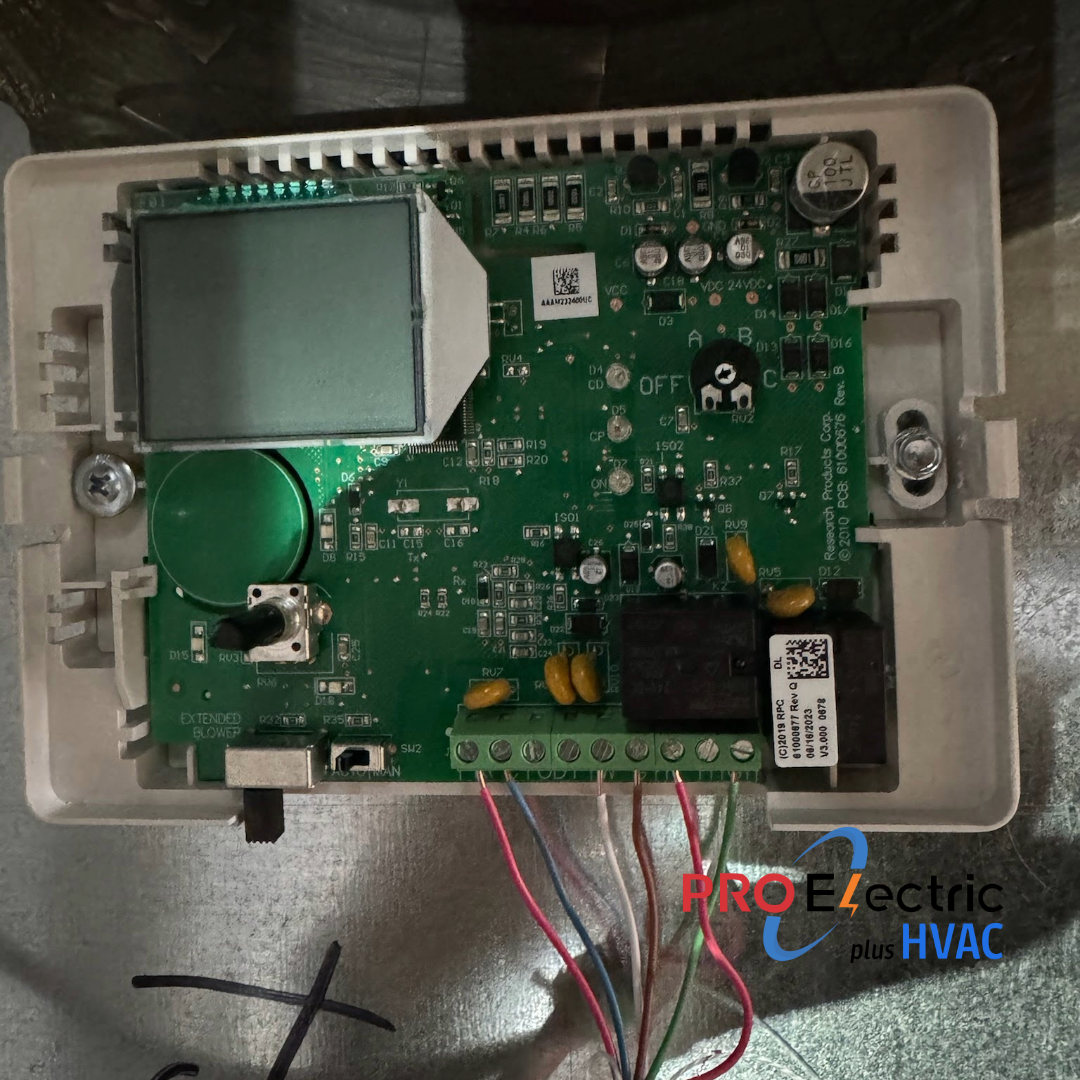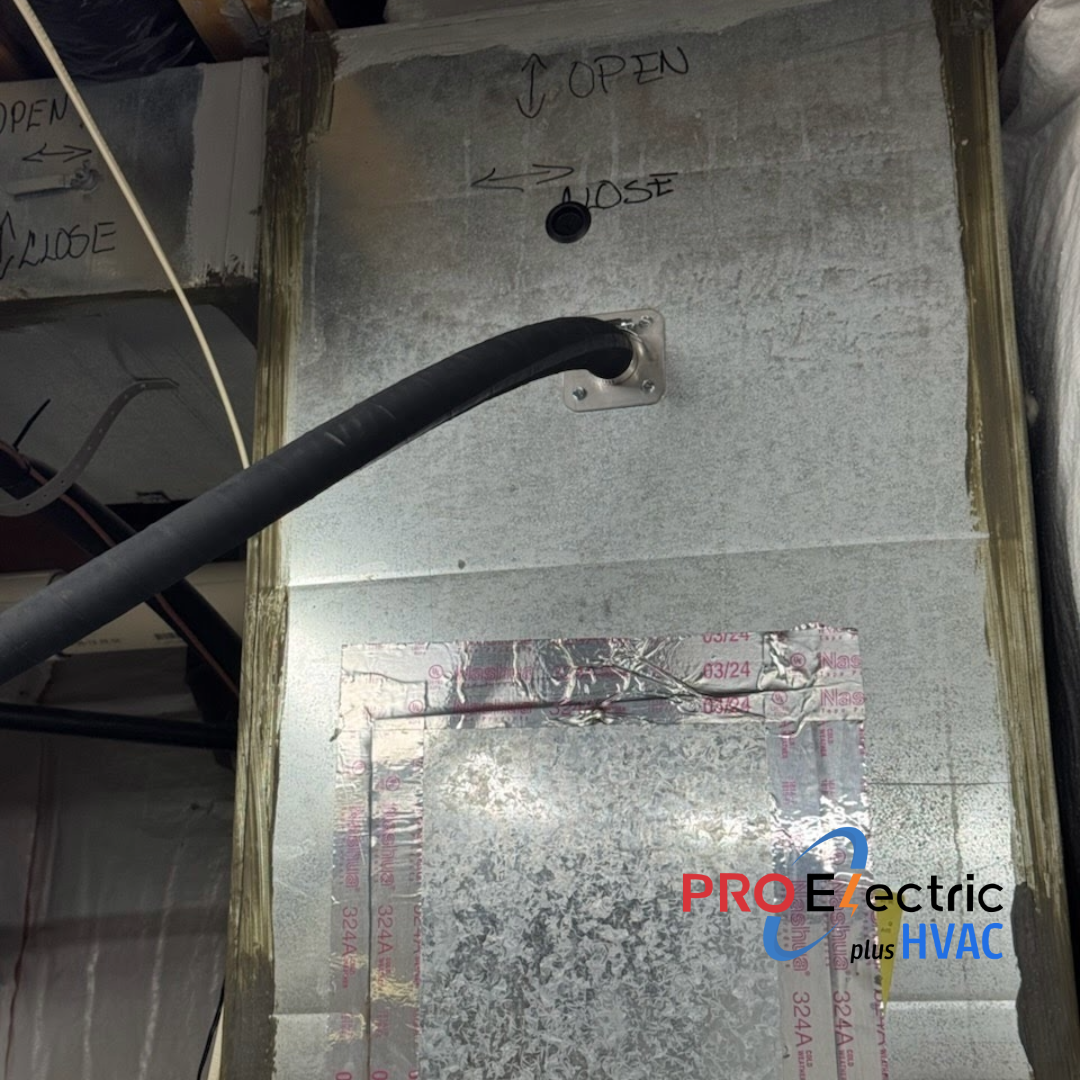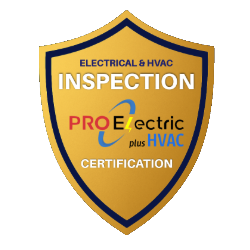CERTIFIED HVAC TECHNICIANSWhole-House Humidifier
Greater Falls Church
TOP 50 QUESTIONS & ANSWERSWhole House Humidifier FAQS
Q1: My humidifier isn’t doing anything. The air feels dry — what’s wrong?
A: Start by checking the water supply valve. Make sure the small valve feeding your humidifier is open. This is one of the most common and easily missed issues.
Q2: The water supply is on. Could the line be clogged?
A: Yes, mineral buildup or debris can block the narrow water line. If it’s clogged, water can’t reach the humidifier. The line may need to be cleaned or replaced.
Q3: Could the water valve on the humidifier be stuck or faulty?
A: That’s possible. The internal valve controls water flow. If it’s corroded or the motor fails, the water won’t enter the system even when the main line is fine.
Q4: What if the drain pipe is blocked?
A: A clogged drain line can cause water backup and trigger safety shutoffs. Clearing the drain often restores normal operation.
Q5: I have a drum-style humidifier. Could the drum be the issue?
A: If the drum motor fails, the drum won’t rotate through the water, stopping evaporation. Check if the motor is getting power and spinning correctly.
Q6: The drum has white, crusty buildup on it.
A: That’s mineral scale from hard water. It reduces evaporation and efficiency. Clean or replace the drum to restore performance.
Q7: My humidifier has a pad or filter — could it be clogged?
A: Yes. Pads collect minerals and dust over time. A clogged pad restricts airflow and prevents evaporation. Replace the pad annually.
Q8: The pad looks worn out. Should I replace it?
A: Definitely. Deteriorated pads can’t hold water effectively. Installing a new one improves humidity output.
Q9: I have a steam humidifier. What fails on these units?
A: The steam generator can burn out or develop electrical faults. If it stops producing steam, have the generator inspected.
Q10: Do steam humidifiers get more mineral buildup?
A: Yes. Boiling water leaves heavy mineral deposits that insulate heating elements and reduce performance. Regular descaling is essential.
Q11: My steam humidifier isn’t producing steam at all.
A: The control board may have failed. If it’s not signaling the generator to heat, the board likely needs replacement.
Q12: Could the humidistat be broken?
A: A faulty humidistat can send incorrect signals or read humidity inaccurately. It may need recalibration or replacement.
Q13: What if I set the humidistat incorrectly?
A: Check your settings. Sometimes it’s just set too low. If readings seem off, recalibrate or replace the humidistat.
Q14: Could wiring cause the problem?
A: Loose or corroded wires are common culprits. Secure and clean all electrical connections.
Q15: Is there a water level sensor that could malfunction?
A: Yes. A bad sensor can falsely indicate low water and shut down the humidifier.
Q16: What happens if the transformer fails?
A: The transformer reduces voltage to the control circuits. If it fails, the unit won’t power on.
Q17: Could duct leaks cause poor performance?
A: Absolutely. Leaky ducts let humidified air escape before reaching rooms. Sealing ducts improves results.
Q18: Could blocked ducts cause issues?
A: Yes. Dust or debris can obstruct airflow, preventing humidity from circulating evenly.
Q19: Could the furnace blower motor be affecting it?
A: If your furnace blower fails, the humidifier can’t circulate moisture. The blower must be operational.
Q20: What about the blower’s capacitor?
A: A weak capacitor can slow or stop the blower, reducing airflow and humidity.
Q21: I have a bypass humidifier. Does the damper position matter?
A: Yes. If the bypass damper is closed, air can’t flow through the humidifier. Open it during heating season.
Q22: Could the humidistat wiring be faulty?
A: Yes. Damaged or corroded wiring can interrupt the signal between the humidistat and humidifier.
Q23: What if the saddle valve on the water line is clogged?
A: Saddle valves often clog over time. Replacing them with a proper tee fitting is a more reliable solution.
Q24: What is a solenoid valve, and can it fail?
A: The solenoid valve controls water flow. If it’s stuck or burned out, it can stop water from entering the unit.
Q25: My humidifier has a float valve. Could that be the issue?
A: Yes. Float valves can stick open or closed due to wear or mineral buildup. Clean or replace as needed.
Q26: Is extremely dry weather too much for the humidifier?
A: In very dry conditions, even good systems can struggle. Reducing drafts and sealing air leaks helps maintain humidity.
Q27: Could my home be too drafty?
A: Yes. Poor sealing lets humidified air escape. Weatherstripping and insulation help retain moisture.
Q28: What if the humidifier itself is leaking water?
A: Check for cracks, loose fittings, or worn seals. Repair or replace damaged components immediately to prevent water damage.
Q29: Could the spray nozzle be clogged?
A: Yes. Nozzles can clog with mineral deposits, preventing even water distribution. Cleaning usually resolves it.
Q30: Can mineral buildup occur in the water pipes feeding the humidifier?
A: Yes. Hard water deposits can narrow pipes and restrict water flow. Descale or replace lines as needed.
Q31: Is there a water filter before the humidifier?
A: Some systems have one. If it’s clogged, it restricts water flow. Replace it regularly.
Q32: Could incorrect installation cause problems?
A: Yes. Poor installation can affect performance and longevity. Ensure the unit is level and properly connected.
Q33: Does cleaning really make a difference?
A: Absolutely. Regular cleaning prevents mineral buildup and keeps your humidifier working efficiently.
Q34: Can a dirty humidistat sensor affect performance?
A: Dust or debris on the sensor can cause inaccurate readings. Keep it clean for accuracy.
Q35: Could the bypass duct be blocked?
A: Yes. Blockages restrict airflow through the humidifier, lowering humidity output.
Q36: What if the bypass flapper valve is stuck?
A: If stuck closed, it limits air circulation. Inspect and free the valve if necessary.
Q37: Can power surges damage the humidifier?
A: Yes. Surges can damage electronic components. Use a surge protector for added safety.
Q38: Does age matter?
A: Yes. Older humidifiers wear out over time. Replacement may be more cost-effective than repair.
Q39: Could the water distribution tray be clogged?
A: Yes. Clogged holes prevent even water flow. Clean the tray to restore proper operation.
Q40: Could the wiring voltage be wrong?
A: Incorrect voltage can damage parts or prevent startup. Verify the wiring matches the unit’s specifications.
Q41: Do some humidifiers have their own fans?
A: Yes. If the internal fan fails, airflow stops, reducing humidity output.
Q42: Could the reservoir or tank be cracked?
A: A cracked reservoir will leak and reduce water availability. Replacement is required.
Q43: Can the water level sensor just be dirty?
A: Yes. Mineral buildup can cause false readings. Cleaning may restore function.
Q44: Could frozen pipes block water to the humidifier?
A: Yes. Frozen lines block flow and may burst. Insulate exposed pipes to prevent freezing.
Q45: Could control wires be broken?
A: Yes. Damaged control wires interrupt communication with the furnace. Inspect and repair them.
Q46: Do some humidifiers have an internal humidistat?
A: Some units do. A failed internal humidistat can stop the system even if the wall unit is fine.
Q47: Could a water level sensor get stuck?
A: Yes. Mineral buildup can cause sensors to stick, leading to overflow or shutdown.
Q48: What is an airflow proving switch, and can it fail?
A: It ensures the furnace blower is running before the humidifier activates. If it fails, the unit won’t turn on.
Q49: Can the humidifier pad be installed incorrectly?
A: Yes. Misalignment reduces efficiency. Ensure it’s seated properly for full airflow and water contact.
Q50: Could pests cause problems?
A: Yes. Mice and insects can chew wires or block components. Inspect and clean the area regularly.
Recent Jobs and Reviews in Falls Church, VA
Reviews
Good as always
We have been using Pro Electric several times already. Everyone on the team is nice and got job done without hiccups. Highly recommended.
– Falls Church, VA 22043
Great
– Falls Church, VA 22042
Job Locations
Install keyless light fixture.
Falls Church, VA 22042
Breaker panel replacement
Falls Church, VA 22042
Install Generator Inlet for battery back up
Falls Church, VA 22041
